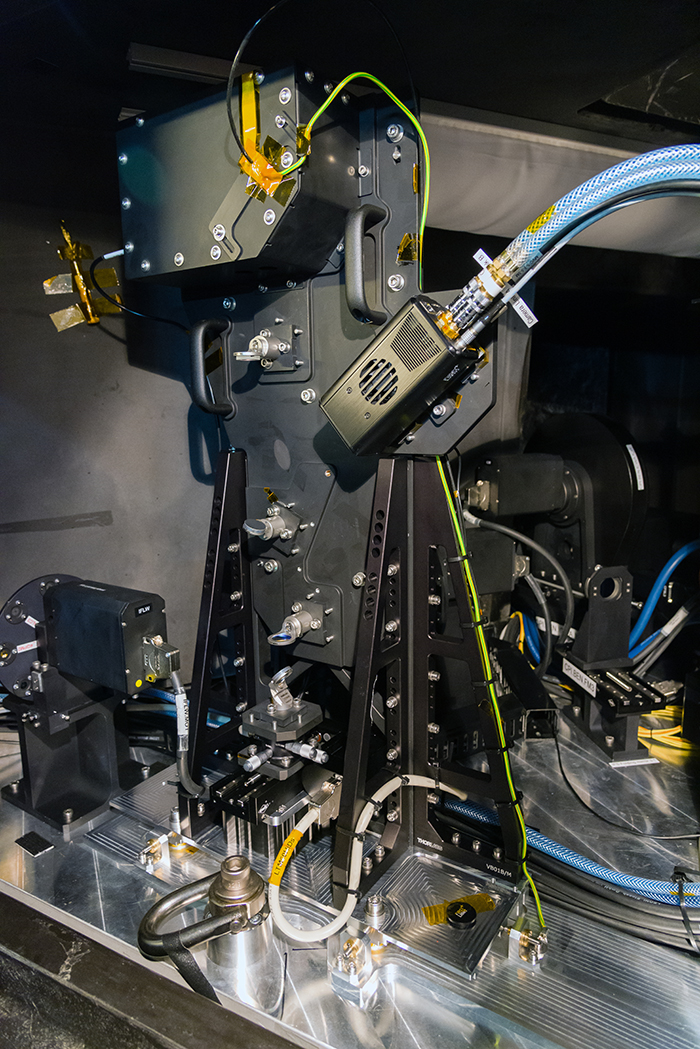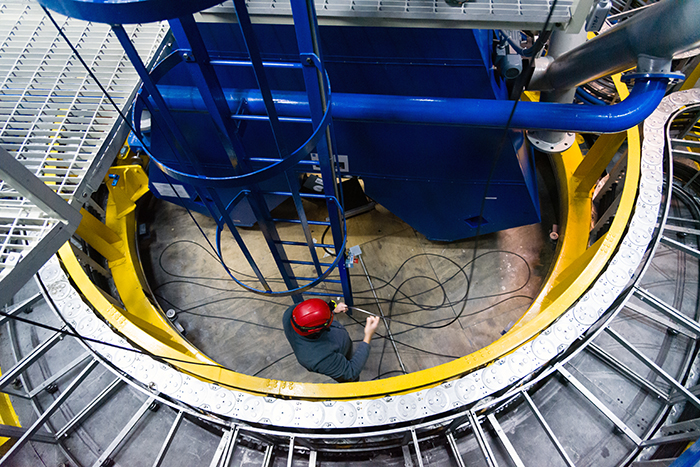
First light for HiRISE, an innovative instrument designed for the study of exoplanets
The European Southern Observatory (ESO)'s Very Large Telescope (VLT) has recently been enhanced with a new instrument featuring an innovative concept that combines the capabilities of two flagship instruments already installed on the telescope. The newcomer, dubbed HiRISE, will couple the SPHERE exoplanet imager and the CRIRES+ very high-resolution spectrograph. While SPHERE has very good resolution for direct imaging of exoplanets, CRIRES+ is 2,000 times more powerful when it comes to separating and analysing the light emitted by such planets, making it possible to determine the composition of their atmospheres. By combining the two instruments via fibre optics, HiRISE will be able to carry out in-depth studies of planets that are already known. It successfully captured its first light from the VLT in Chile's Atacama Desert on July 9, 2023.
HiRISE received an ERC Starting Grant and was developed at the Marseille Astrophysics Laboratory (CNRS/CNES/Aix-Marseille University). It also benefited from the expertise of teams at the Grenoble Institute of Planetology and Astrophysics (CNRS/Université Grenoble Alpes), and at the JL Lagrange Laboratory (CNRS/Observatoire de la Côte d 'Azur/Université Côte d 'Azur).

© Arthur VIGAN / LAM / CNRS Images

© Arthur VIGAN / LAM / CNRS Images
You can see all the images of HiRISE at CNRS Images.


